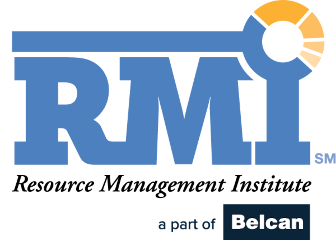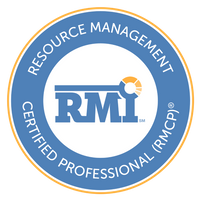Over the last 14 years, I’ve spent a considerable amount of time speaking with people about various aspects of resource management. As a result of these conversations, I’ve recently concluded that resource management cannot be successful without having an excellent project management group as an equal partner. Until both disciplines function in tandem, neither discipline will be truly successful.
Project managers need to be responsible for managing the project team as well as scope and schedule. Resource managers, on the other hand, should be managing the careers and work assignments of the individuals who will be part of a specific project team. If you’ve ever seen this done well (almost always by external consulting firms), it’s pretty impressive.
The only thing I see standing in the way of non-consulting companies achieving the same results is low PM and RM maturity combined with a dearth of collaborative skills. Luckily, there are some very simple workarounds. The most important one I see at the moment is establishing a combined community of practice dedicated to upskilling PMs and RMs in their joint mission to execute strategy reliably.
If you think this sounds like I’m quietly proposing instigating a culture change in organizations, you’re right. Culture change isn’t as difficult as people claim it is. All you need to do is make it safe and attractive for people to change. Safety comes from having the entire group participate in mastering the new way of doing things, and the payoff comes when people realize the new method is more effective and easier.
For anyone unfamiliar with a Community of Practice (CoP), it’s a discussion group organized around a specific business area. In the case of RMs and PMs, the initial conversation might be focused on answering the questions “Why can’t RMs get me the “right” people for my project?” and “Why can’t someone on the PM side stop asking people to work on five projects simultaneously?”
To avoid these conversations getting tribal, the goal should be to work out some simple rules and protocols. For example, here are the rules I’ve always used:
- Never assign anyone to more than two simultaneous projects. If you must assign more projects, stop at three and split the work by days.
- Only assign people to tasks they have the skill level to complete. If the assignment is designed to develop a new skill, provide access to a mentor.
- Problems can’t be solved in isolation: when something goes wrong, escalate it to the team of RMs and PMs involved directly with the skilled individuals and the work that needs to be done.
- Ensure project managers know they CANNOT over-commit a resource without escalating the problem, as shown in the example below.
In theory, if a resource is assigned to a project for 200 hours, the project manager can’t just unilaterally accept additional work for that resource and not notify everyone else who might be planning on using that resource’s time. For example:
If a resource has a 100-hour assignment and a new work request will add another 100 hours, where are those 100 hours going to come from? Especially since the same resource is assigned to project B for 200 hours and project C for 500 hours in the same time frame?
A single project manager can’t solve this problem by themselves. But a team of RMs and PMs, who have gained a sense of trust and familiarity by working with each other in the CoP, can solve it when they agree to approach the problem from a standard framework.
With the relationships that have been formed by participating in the CoP, the RM and the PM could explore the following options:
- Is the new request truly urgent, or can it be delayed to a later date?
- If skills required for the 100 hours of work potentially match those of another current team member, consider whether or not the work can be reprioritized in the team (100 hours added and 100 hours cut somewhere else.)
- Consider replacing the person currently doing the work with someone with higher skills (a 10x developer) to speed up the work.
- Consider resequencing Projects A, B, and C so that the resource isn’t trying to work on three projects simultaneously. Eliminating excessive task switching has been shown to improve productivity by an average of 20% to 30%, which should make room for the 100 hours of extra work.
For this solution to work consistently, the key is that everyone needs to share a consistent mental model. The Community of Practice provides the opportunity for this to happen. After all, human beings learn best when they can hear stories and experiences from people who have already made the change.
The final suggestion is to invest in a full-featured resource management tool to ensure everyone sees the same data. At a minimum, both the resource manager and the project manager would be able to see the project schedule, the skills of the people who might be assigned, and a list of other projects potentially competing for the same resources.
To be clear, an exhausted, overworked human being is of no use to anyone. So, before the great resignation gets even more out of hand, it makes sense to fix the problems that are driving people out of companies.
Resource managers and project managers owe the people working for them a commitment to solve, rather than just accept, problems. The key is, when a single project manager or resource manager is facing trying to fix over-scheduled and over-committed resources, the problem is daunting. When a group of RMs and PMs are committed to solving the problem jointly and shifting the culture (so it doesn’t keep happening), I think we’ll find that people have no desire to leave good jobs.
Donna Fitzgerald first discovered the wonders of resource management when she was assigned to help productize the home-grown resource management system at Oracle. Having once been Silicon Valley CFO as well as a program manager she immediately recognized that RM was the key to getting strategy executed. As an ex-Gartner analyst her research has also led her to believe that good RM is the key to keeping employees healthy, happy and engaged at work.





